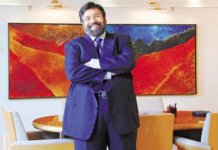The latter half of the 20th century saw the emergence of what many hailed as a major breakthrough in the global effort to combat poverty: The invention of micro-credit. The micro-credit method consisted of providing small loans to underprivileged people across the developing world enabling them to lift themselves out of poverty and into a prosperous future. This revolutionary idea was celebrated the world over for its practicality and prominent micro-credit pioneer Muhammad Yunus was even awarded a Nobel Peace Prize in 2006.
The advent of online peer-to-peer technology has led to the emergence of Internet micro-credit platforms such as Kiva. Founded in 2005, it has emerged as a leader in peer-to-peer lending, connecting nearly one million micro-credit lenders to borrowers across 72 countries. It accomplishes this by facilitating the capital flow with local Field Partners (microfinance institutions, social businesses, schools and non-profit organisations), which directly disburse and collect loans on behalf of Kiva and its lenders.
[ms-protect-content id=”4069, 4129″]
The lending process can be broken down into 6 steps (as described on Kiva.org):
1. The borrower meets with a Kiva Field Partner and requests a loan.
2. The Field Partner disburses a loan to the borrower.
3. The Field Partner uploads the loan request to Kiva. The request is reviewed by a team of volunteer editors and translators and then published on the website.
4. Kiva lenders fund the loan request, and they sends the funds to the Field Partner.
5. As the borrower makes repayments, the Field Partner sends owed funds to Kiva whereupon it repays lenders.
6. Lenders can give another loan, donate to Kiva, or transfer the money back to their PayPal account.
According to Kiva, this lending model has resulted in facilitating $471,394,950 in loans, boasting a 99.01% repayment rate. Its impact has been far-reaching, with 1,050,587 borrowers benefitting from Kiva loans, which average $406.79 per loan. Furthermore, it has been a catalyst for empowering women as 80.46% of its loans have been made to female entrepreneurs.
Despite these results, Kiva has also faced criticism. While itself does not collect any interest on the loans, its Field Partners charge an average of 35.21%. Many accuse this rate of being unreasonably high, and few emerging micro-credit platforms have been able to eliminate the Field Partner intermediaries altogether. Field Partners have also come under fire as cases of misappropriated funds and fraudulent activity have come to light.
Prospective lenders would do well to study up on transparency efforts and independent audit findings before moving forward with any micro-credit participation. However, there is little doubt that responsible micro-credit initiatives remains one of several effective weapons in the global battle against poverty.
Tharawat Magazine, Issue 20, 2013
[/ms-protect-content]














